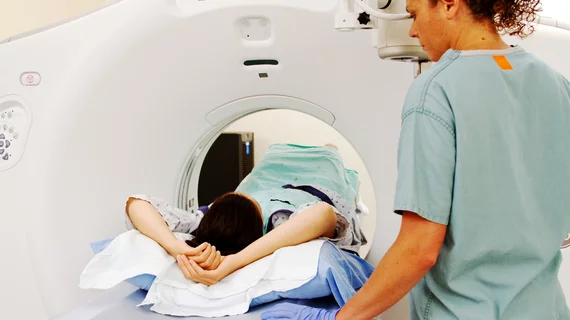Imaging utilization continues to rise among adult patients, according to a new analysis of more than 135 million examinations. The findings, published in JAMA, come after physician groups have fought to curb utilization in the last several years.
The study’s authors highlighted why tracking these numbers so closely is so crucial.
“Medical imaging contributes to accurate disease diagnosis and improved treatment; however, imaging can also increase costs and patient harms, such as incidental findings, overdiagnosis, anxiety, and radiation exposure associated with increased risk of cancer,” wrote Rebecca Smith-Bindman, MD, department of radiology and biomedical imaging at the University of California San Francisco, and colleagues. “It has been estimated that 30% or more of imaging examinations may be unnecessary, costing approximately $30 billion annually in the United States.”
Smith-Birdman et al. tracked utilization in seven integrated healthcare systems throughout the United States and one in Ontario, Canada, from 2000 to 2016. Overall, the team found that the annual growth for CT, MRI and ultrasound were at their highest from 2000 to 2006, but growth has still persisted in more recent years.
Comparing statistics from 2000 to 2016, CT imaging rates in the United States were 204 per 1,000 person-years in 2000 and 428 per 1,000 in 2016. In Ontario, those numbers were 161 per 1,000 person-years in 2000 and 409 in 2016. For MRI, the rates in the United States were 62 per 1,000 person-years in 2000 and 139 in 2016. The MRI rates in Ontario were 13 per 1,000 person-years in 2000 and 89 in 2016.
One significant exception to this trend was CT imaging in Ontario, which actually dropped from 2000 to 2016. The growth of CT imaging among children did slow in the United States, and there was even a “large reduction” after 2009. It has been rising at a slow, stable pace in more recent years.
The authors noted that, despite the rise in utilization, there have been significant efforts to lower these numbers, including detailed guidelines and initiatives focused on how to place appropriate imaging orders.
“Although guidelines have been developed for imaging, they are primarily based on expert opinion rather than evidence and have not been shown to reduce imaging,” they wrote. “Imaging examinations are frequently adopted into clinical practice before evidence supports their use, and once incorporated into practice, withdrawing their use is difficult. Thus, it is not surprising that imaging rates have not declined substantially despite multiple policy and clinical efforts focused on reducing imaging use. In addition, what is acceptable clinical practice changes over time.”
Smith-Birdman et al. also noted that there is some evidence that spreading the word about imaging utilization can make an impact. As physicians and the public have been educated more and more about the risk of radiation exposure to children, for instance, that’s where growth has slowed significantly.
“The decline of CT in children and greater increase in MRI may reflect greater awareness of the concern regarding radiation exposure and harm in children,” the authors wrote.
What do these findings tell us?
Deborah Levine, MD, of Beth Israel Deaconess Medical Center in Boston and Richard Duszak Jr, MD, of Emory University School of Medicine in Atlanta, wrote an editorial on these findings, also published in JAMA.
Levine and Duszak noted that “utilization research remains important in guiding meaningful health policy, and imaging is associated with both substantial cost and some risk.” However, they added, rising utilization is not necessarily a bad thing.
“Smith-Bindman et al seem to imply that the increasing use of advanced imaging is not beneficial,” Levine and Duszak wrote. “The increasingly burdensome preapproval steps that some treating physicians need to navigate to order imaging studies are relevant. If physicians did not perceive imaging as necessary or valuable, perhaps they would just stop ordering it. A plausible explanation, then, for increasing use of advanced imaging is that the results of these tests continue to be perceived as improving patient care and outcomes.”
Going forward, the commentary’s authors concluded, there is certainly more work to be done on this topic.
“Knowing that imaging utilization is increasing is an important and necessary step toward the ultimate collective goal of knowing what medical imaging is appropriate,” they wrote. “Counting imaging examinations is easier than measuring imaging outcomes, and that is why more work is needed. Studies such as this report by Smith-Bindman et al should serve to inspire and inform imaging researchers as they move their agendas from ‘how much’ to ‘how appropriate’ to ultimately ‘how patient outcomes are improved.”

